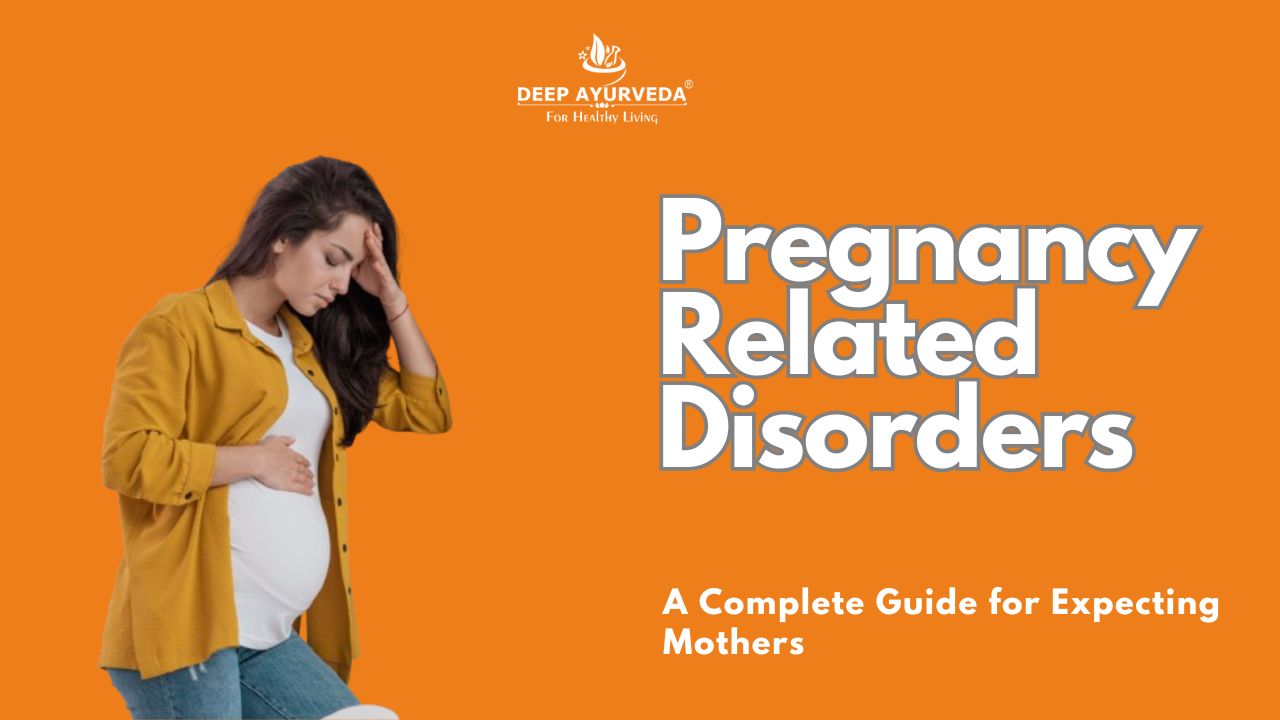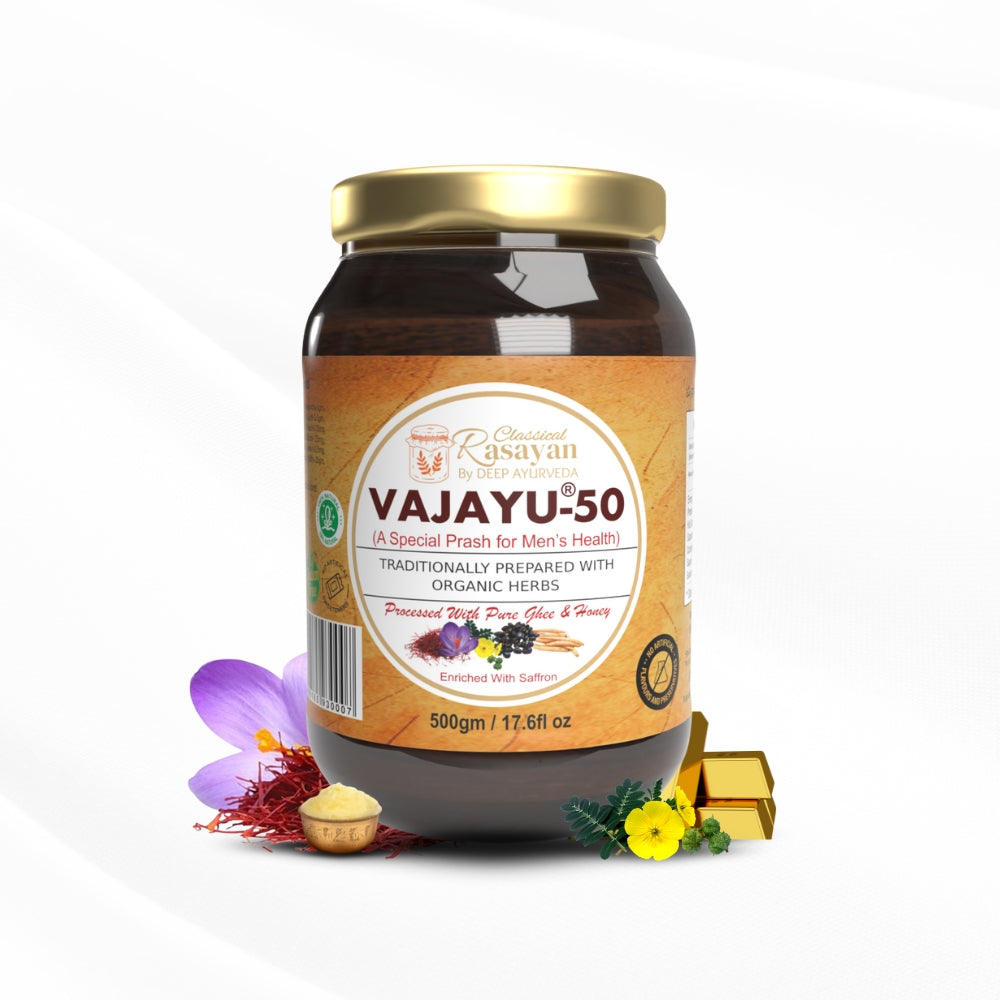Pregnancy is a beautiful and transformative phase in a woman’s life, marked by the development of a new life within her womb. During this period, the mother’s body undergoes significant adaptations to support the growth and nourishment of the fetus.
Hormonal changes and increased physiological demands during pregnancy can lead to Disorders such as gestational diabetes, preeclampsia, anemia, hyperemesis gravidarum (excessive vomiting), urinary tract infections, and placenta previa. With its individualized and preventive care approach, Ayurveda helps in minimizing complications and promoting a safe and healthy pregnancy.
Common Pregnancy-Related Disorders
Morning Sickness (Hyperemesis Gravidarum)-A common symptom experienced by many women during the first trimester in which female feels nausea mostly during morning. It is usually caused by hormonal changes, particularly the rise in human chorionic gonadotropin (hCG) and estrogen levels.
Gestational Diabetes- It is a Pregnancy-Related Metabolic Disorder. Gestational diabetes mellitus (GDM) is a type of diabetes that develops during pregnancy, typically in the second or third trimester. It is characterized by elevated blood glucose levels due to insulin resistance caused by hormonal changes.
Pre-eclampsia and Eclampsia-It is also known as gestational hypertension, is a condition characterized by elevated blood pressure (≥140/90 mmHg) that develops after the 20th week of pregnancy in women .
Anemia in Pregnancy- It is characterized by a reduced number of healthy red blood cells, leading to decreased oxygen delivery to the body’s tissues. Common symptoms include fatigue, weakness, pale skin, shortness of breath, and dizziness. If left untreated, anemia can increase the risk of preterm birth, low birth weight, and postpartum complications.
Urinary Tract Infections (UTIs)-Urinary Tract Infections (UTIs) are common during pregnancy due to hormonal changes and the pressure of the growing uterus on the bladder.
Thyroid Imbalances-Thyroid imbalance during pregnancy is mainly due to the increased hormonal and metabolic demands placed on the mother’s body
Placenta Previa-Placenta previa is a condition where the placenta partially or completely covers the cervix, the opening of the uterus. This abnormal positioning can lead to painless vaginal bleeding, especially in the second or third trimester, and poses risks during delivery as the placenta may block the baby’s exit path. It can result in complications such as preterm birth, placental abruption, or excessive bleeding during labor, necessitating a cesarean delivery in most cases.
Garbhini Vikar-Ayurveda View
"गर्भिणी व्यापारो नाम ते रोगाः ये गर्भिण्यां जायन्ते।"
Those disorders that occur specifically in a pregnant woman are termed Garbhini Vyapada).
1)Garbhini Chardi(Hyperemesis Gravidarum)
Garbhini Chardi refers to nausea and vomiting experienced by a pregnant woman, commonly occurring during the first trimester. In Ayurveda, this is symptom due to dosha imbalance, primarily Pitta and Vata, during the early stages of pregnancy.
Ayurvedic management-
Ela (Cardamom) – Soothes nausea
Lavanga (Clove) – Anti-emetic
Draksha (Raisins) soaked in water overnight
Kamdugha Ras with Mukta
Sutshekhar Ras
Draksha Avaleh
Dadimadhya ghrit
Madiphala Rasayana
2)Garbhhini Pandu(Anemia during Pregnancy)
Garbhini Pandu refers to anemia occurring during pregnancy, as explained in Ayurveda. It is considered a pregnancy-related disorder (Garbhini Vyapad) caused by the vitiation of Pitta dosha along with Rasa and Rakta Dhatu kshaya (deficiency of plasma and blood tissues). This condition leads to reduced Ojas, weakness in the mother, and improper fetal nourishment.
Ayurvedic Management-
Punarnavadi mandoor
Dhatri loh
Tapyadi loh
Navayas loh
Dadimadhya ghrit
3)Kikkish(Stretch Marks During Pregnancy
Kikkisa are thin, reddish-black or bluish streaks appearing on the abdomen and breasts during pregnancy.
Ayurveda Managment-
Lepam of manjistha and mrinal chandan
Churn of shirish ,dhatki,sarshap
Oil abhyang with kumkumadi tail
4)Garbhini Madhumeha
In Ayurveda, it is understood under the broader spectrum of “Prameha”, and during pregnancy, it's specifically referred to as “Garbhinī Madhumeha”—a condition arising due to the imbalance of Kapha dosha, associated with metabolic disturbances and Rasa-Rakta Dhatu dushti (impairment of bodily fluids and blood).
Herbs for managing gestational madhumeh-
Nishaamlaki
Gudmar (Gymnema sylvestre) – Reduces sugar absorption
Methi (Fenugreek) – Enhances insulin sensitivity
Amalaki (Emblica officinalis) – Rasayana and antioxidant
Neem, Haridra (Turmeric) – Bitter herbs to pacify Kapha
5)Placenta Previa -Ayurveda View
Although the term placenta previa is not directly mentioned in classical Ayurvedic texts, it can be functionally correlated with Apanavayu dushti – Vitiation of Apana Vata, which governs downward movement and pregnancy maintenance. It can also be correlated to
-
Garbhasrava (गर्भस्रव) – Threatened miscarriage
-
Garbhapata (गर्भपात) – Abortion
- Raktayoni (रक्तयोनि) – Vaginal bleeding
Ayurveda sees such bleeding conditions as arising due to vitiation of Rakta (blood) and Pitta dosha, often along with Apana Vata disturbance.
Ayueveda Management-
Strict rest: Complete bed rest is recommended. Avoid travel, heavy lifting, or stress. Left lateral position for sleeping is preferred to increase uterine blood flow. Light, digestible, and nourishing foods to strengthen rasa and rakta dhatu should be taken Including Milk, ghee, dates, coconut water, Shatavari Ksheerapaka which strengthens uterus and nourishes fetus.
6)Eclampsia-Garbhini Soth
In Ayurveda it can be correlated with garbhini soth due to vitiation of kaph dosh wiith symptoms like Swelling in ankles, legs, or face ,Feeling of heaviness or tightness,Fatigue or dullness.
Ayurvedic Management-Foot massage with medicated oils like Dashamoola Taila
-Lie down on a firm surface (like a yoga mat or bed).Use a soft pillow or folded towel under your legs.Elevate your legs so that ankles are 6–12 inches above the level of the heart.
Garbhini Paricharya
Garbhini Paricharya refers to the Ayurvedic antenatal care regimen—a structured monthly diet, lifestyle, and herbal guidance provided to a pregnant woman to ensure the health of the mother and the proper growth of the fetus.
Objectives of Garbhini Paricharya:
-
Maintain maternal health
-
Ensure proper growth of the fetus
-
Prevent pregnancy-related complications
- Prepare the mother for normal labor
Month-Wise Garbhini Paricharya
|
Month |
Dietary Recommendations |
Medications (if needed) |
|
1st Month |
Milk with small amounts of ghee; light, liquid food |
Siddha Ghrita, cold milk |
|
2nd Month |
Milk with herbs like Shatavari or Vidari |
Shatavari Ghrita |
|
3rd Month |
Milk with rice gruel (Yavagu), sweet and nourishing foods |
Sukumara Ghrita |
|
4th Month |
Butter, milk with medicated gruel; fetal organ development stage |
Phalaghrita, Kalyanaka Ghrita |
|
5th Month |
Ghee with rice, milk; light, cooling, nutritious diet |
Brahmi Ghrita |
|
6th Month |
Start snigdha & brimhani (nourishing) food; more ghee & milk |
Ashwagandhadi Lehyam |
|
7th Month |
Sweet liquids, medicated ghee, avoid exertion |
Begin Yoni Pichu with Bala Taila |
|
8th Month |
Rice gruel with ghee, use of oil massage (Abhyanga) |
Yoni Pichu, Mridu Basti if required |
|
9th Month |
Light but strengthening diet, oil massage, swedana |
Yoni Abhyanga, Basti, Sukha Prasava Yoga (easy delivery decoctions) |
Conclusion-
By focusing on dosha balance, proper diet (ahara), lifestyle (vihara), and monthly antenatal care (Garbhinī Paricharyā), Ayurveda not only addresses the root cause of complications but also promotes the health and well-being of both mother and fetus.






